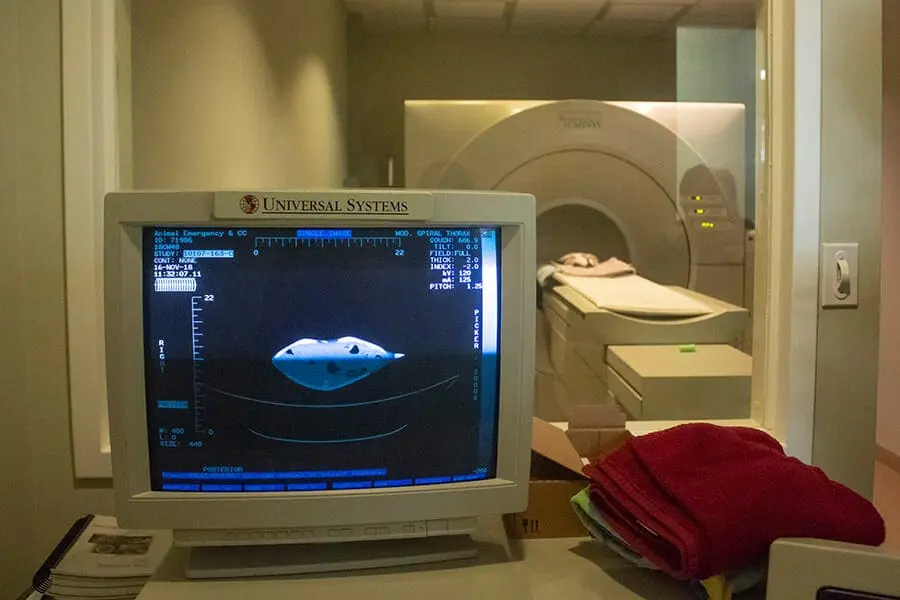

Green turtle Culvert lays in the machine during a CT scan. Fortunately, we did not see any tumors!
At our Sea Turtle Healing Center, animal wellness is the top priority. Patients are brought to the Healing Center for a variety of reasons; they may be recovering from a boat strike, interaction with human debris or debilitation.
One of the main functions of the Healing Center is to treat sea turtles that come to us with a virus called fibropapillomatosis (FP), which causes benign but cumbersome tumors to grow inside and outside of the host’s body. Our Healing Center is one of just seven facilities in Florida able to treat patients with FP.
It is fairly easy to visually identify external FP tumors; however, internal tumors are much more difficult to recognize. Up until a couple of years ago, a scope procedure was always used to check for this invasive disease. The procedure required weeks of preparation for the patient and used special surgical tools to look inside the body cavity for those internal tumors.
Around a year and a half ago, Healing Center veterinary staff made the decision to, whenever possible, use a computed tomography (CT) scan in lieu of the scope procedure to check for internal FP tumors. CT is decidedly easier on turtles with FP because it takes just a few minutes, is less invasive and does not require as much stress on the body of the turtle.
When a turtle comes to the Healing Center with external FP, an appointment is made at a local emergency veterinary clinic for a CT scan. On the day of the appointment, the turtle is given a small dose of anesthesia, if needed, to ensure that they do not move around during the scan. They are then transported over to the clinic and placed in the CT machine.
Just like in humans, the CT scan uses a combination of x-rays and a computer to create pictures of the turtle’s organs, bones and other tissues. Our turtles are sometimes given contrast dye to help highlight the areas being examined. The results of the scan can show whether the patient has FP tumors internally.
There is still much to learn about FP in the scientific community, and neither the scope procedure nor the CT scan is 100% guaranteed to identify the presence of internal FP in sea turtles. The Healing Center chooses to take the less invasive approach of the CT scan when possible for our patients with FP.
There is not currently a successful surgical technique to remove internal FP, and turtles with this condition are euthanized in accordance with Florida Fish and Wildlife Conservation Commission regulations. We can reduce the prevalence of FP locally by working to keep the Indian River Lagoon a healthy habitat. Minimize waste and runoff by following fertilizer bans, cleaning up pet waste, washing your car on your lawn instead of the driveway and properly maintaining (or replacing) your septic system.